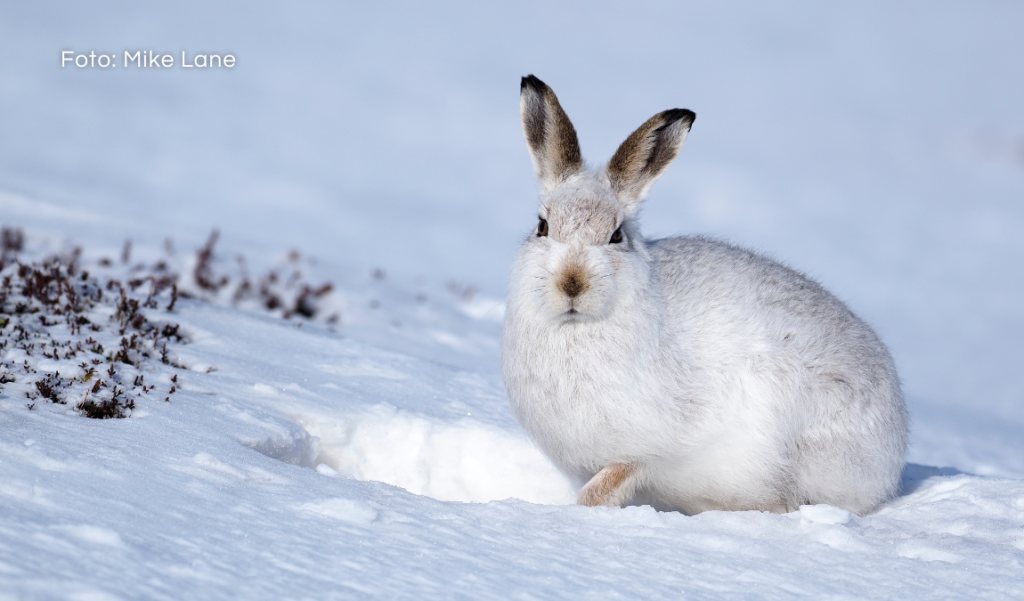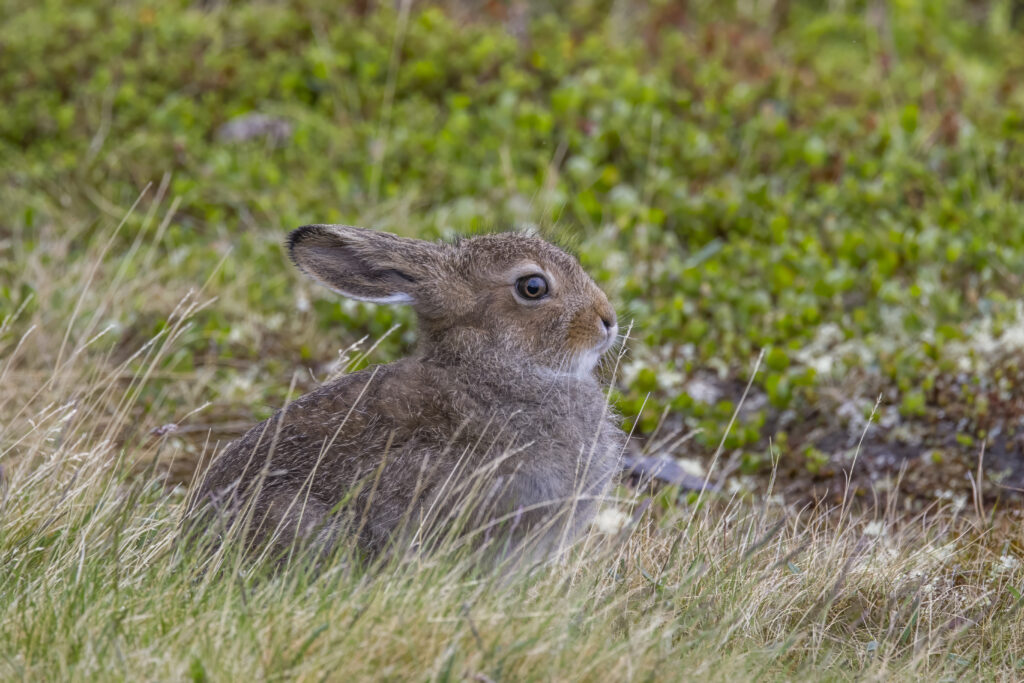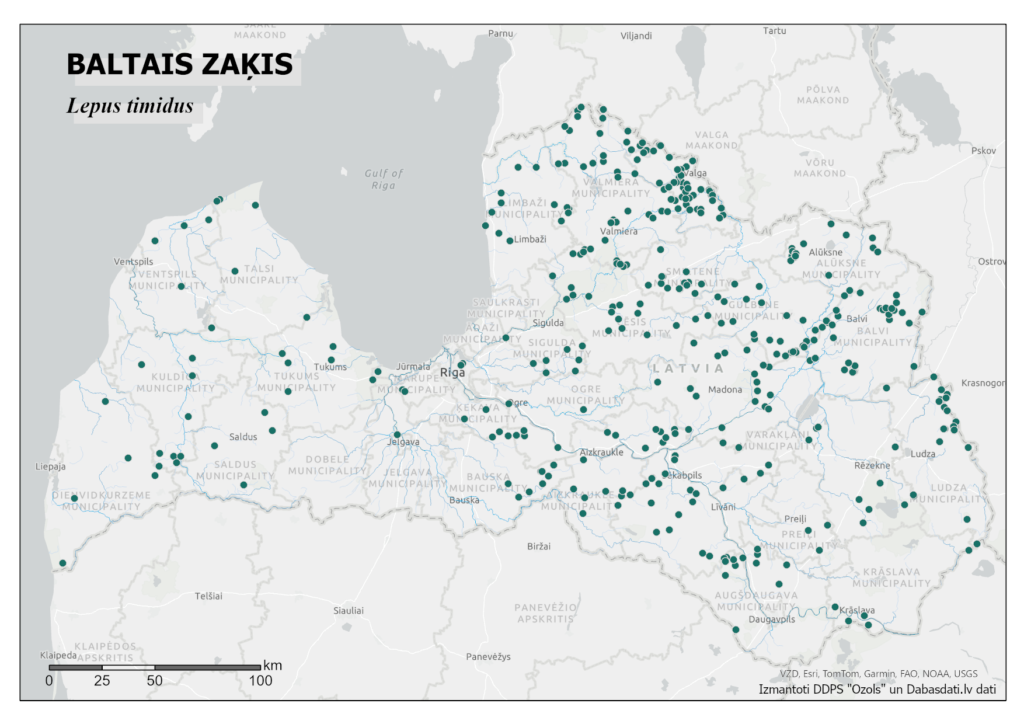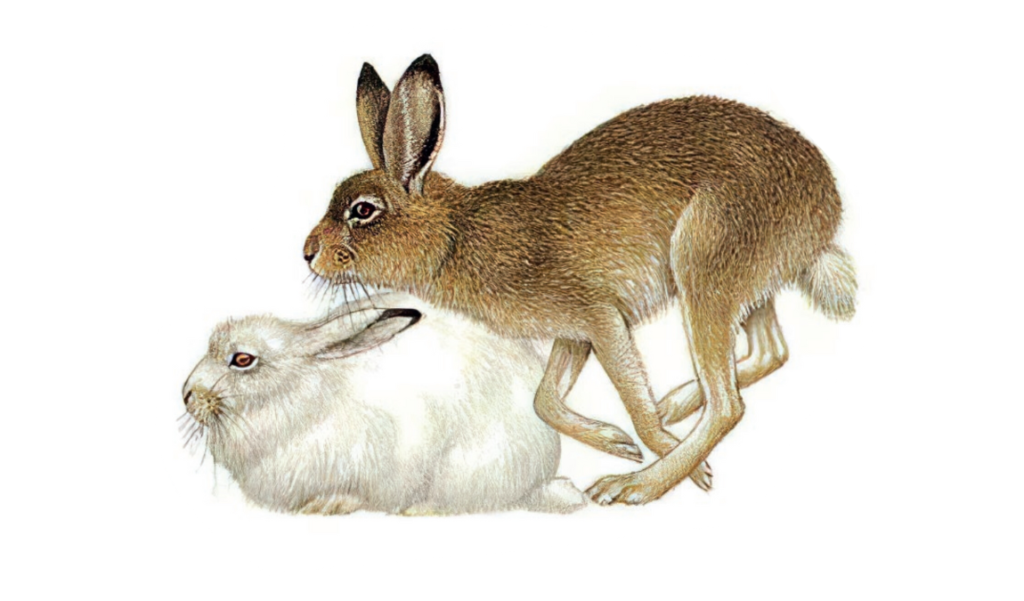Protected species of the month: mountain hare
The mountain hare (Lepus timidus) is often confused with the brown hare (Lepus europaeus), as the two species can only be visually distinguished during winter. Although both hare species are related, the mountain hare is a forest dweller, while the brown hare prefers open landscapes. Where the ranges of the two species overlap, the brown hare tends to dominate, making it more commonly found in Latvia than the mountain hare.

The mountain hare's coat changes twice a year, taking about 2.5 months each time. In the spring, it gradually replaces its fur starting from the front of the body, and in the autumn, the change occurs in the opposite direction. In summer, its back is brownish or brownish-grey, the head is darker, and the sides are lighter, with a whitish belly. In winter, the coat is entirely white, except for the black tips of the ears. In contrast, the brown hare is more of a brown color and only turns greyish in the spring.
The mountain hare's tail is short (6-7 cm) and rounded, unlike the brown hare's, which is longer, elongated, and has a distinct dark spot on the top. The mountain hare's ear tips are black throughout the year, and the edge of the ear is decorated with a white stripe (the brown hare's is dark). The hind legs (13-17 cm) are significantly longer than the forelegs (7-9 cm), and the feet are rounded. The underside of the feet is densely covered with cushioning fur. The forelegs have five toes, while the hind legs have four. On average, the mountain hare is 45-50 cm long and weighs 3-5kg.
Mountain hares live an average of 8 - 9 years. They are active all year round, with their activity peaking at dusk and during the night. They are territorial (inhabiting a specific area) and solitary (living alone). They are most commonly found in mixed forests bordering on growing clearcuts, meadows, grasslands, swamps, or water bodies.
In winter, the fur on the mountain hare's hind legs grows thicker, serving as snowshoes to prevent sinking deeply into the snow. Meanwhile, its teeth grow throughout its life – as they wear down from gnawing, they must regrow. Unlike rodents, it has four incisors in the lower jaw, not just two. Its eyes are positioned to give nearly a 360° field of vision. However, its overall vision is poorly developed – it can only distinguish moving objects from a distance.

The hare is one of the fastest animals in Latvia – capable of speeds up to 50-60 km/h when fleeing danger. To evade predators, hares confuse their tracks – moving in long jumps, making wide sidesteps, and looping back to their previous paths. When pursued by predators, hares flee by running in loops.
In the summer, the mountain hare is a herbivore - feeding on the green parts of plants. In winter, it becomes a browser – feeding on the branches and bark of leafy trees, mosses, and lichens. It practices coprophagy, or eating its own excrement, which increases the digestibility of food and helps maintain the gut flora. Hares tend to gnaw on the antlers of deer, elk, and roe deer, and scrape on the skeletal remains of animals, thereby ingesting necessary minerals.

Threats
The population size is influenced by climate change, human activity, predators, diseases, and other factors. In southern Sweden, the population has decreased due to warmer winters. In Lithuania, it is considered a vulnerable species (VU) due to predator proliferation and habitat degradation. In Latvia, the population has declined compared to the beginning of the 21st century, presumably due to several factors – an increase in snowless periods, the use of plant protection products, competition, and hybridization with the brown hare. However, the species is assessed as least concern (LC), as the population has been stable over the last 10 years, at about 10-11 thousand individuals.
Reproduction
The mountain hare is polygamous – the female attracts several males, among whom a boxing-like battle ensues. The first mating season begins in March, and the second in May. The female has 1-2 litters per year, with pregnancy lasting an average of 51 days. Each litter consists of 4-7 young, with summer litters typically having more. The newborns are thickly furred, sighted, and capable of moving independently from day one. The mother nurses the young 1-2 times a day, spending the rest of the time away from them to reduce the risk of predation. The development of the young is rapid – by 7-9 days old, they begin to eat grass in addition to milk, and by 3-4 weeks old, they become independent. The mortality rate of the young is high – about a third of the newborns survive the first month. Mountain hares reach sexual maturity at 11 months of age.
Conservation
Included in the Bern Convention and the Habitats Directive, as a species whose individuals may be obtained provided the species maintains a favorable conservation status. In Latvia, it is a protected species with limited use, which may be hunted from October to January.
The mountain hare's natural enemies include predatory birds – eagles, owls, and mammals – foxes, stoats, lynxes, wolves, and stray dogs.

